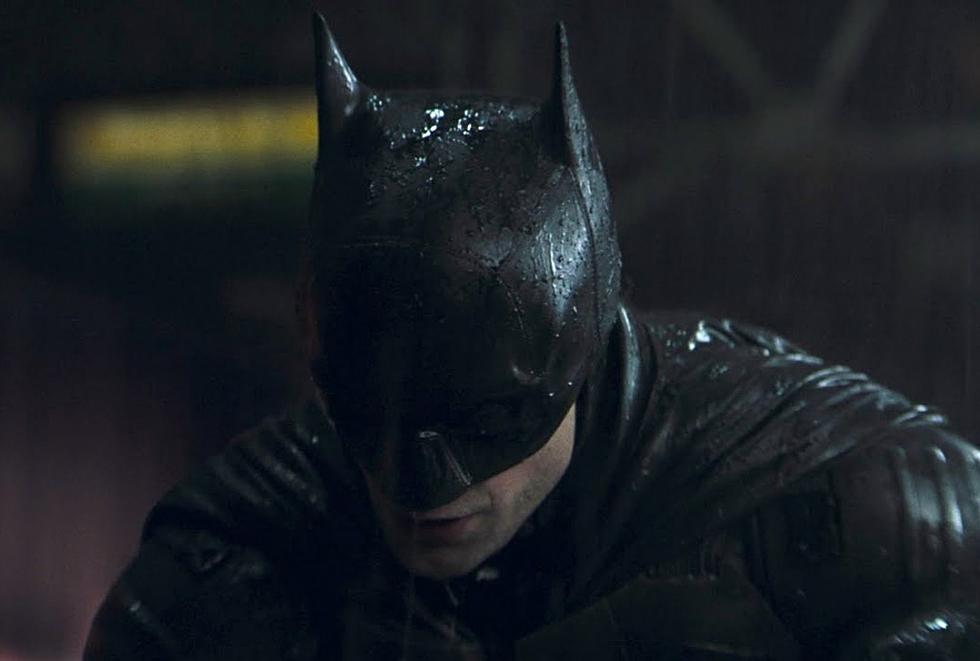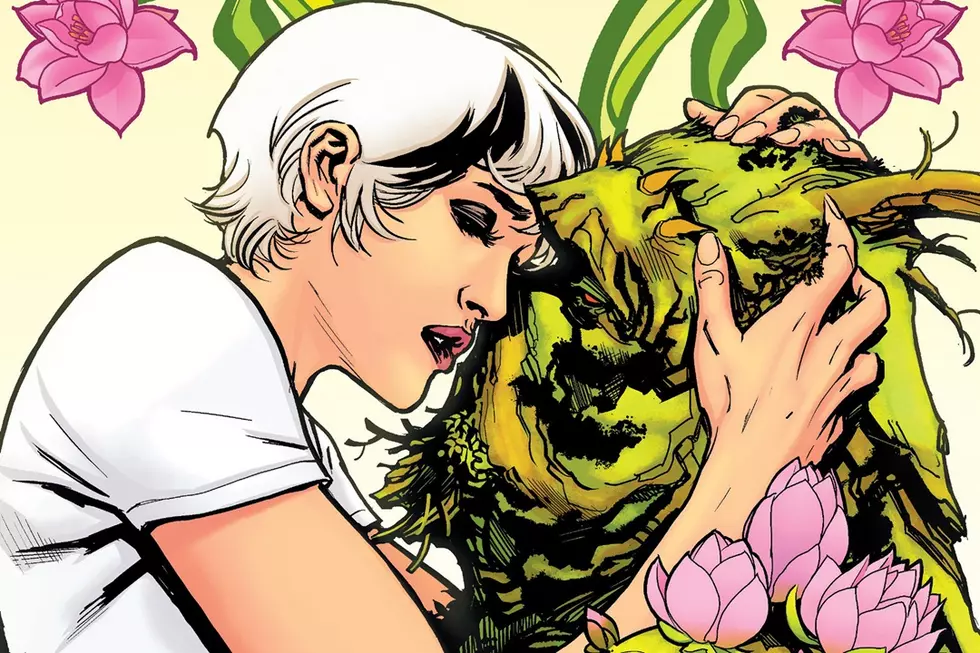![This Is A Ramones Song: Rob Williams On What Makes ‘Suicide Squad’ Tick [Interview]](http://townsquare.media/site/622/files/2016/12/SSQUAD_8_dylux-0.jpg?w=630&h=969&zc=1&s=0&a=t&q=89&w=980&q=75)
This Is A Ramones Song: Rob Williams On What Makes ‘Suicide Squad’ Tick [Interview]
Rob Williams and Jim Lee's Suicide Squad is a perfect example of what DC Comics aimed to do with its Rebirth shake-up. It builds on what made the property popular back in the days of John Ostrander, Kim Yale and Luke McDonnell while embracing the changes that have happened in the decades since, and the end result is a wonderful fusion of everything great about the property.
With Suicide Squad #8 out this week, and the Justice League vs Suicide Squad event on the horizon, ComicsAlliance chatted with Williams about his approach to the individual characters, and the punk rock influence at the heart of the title.
ComicsAlliance: This run seems a lot more influenced by the Ostrander/Yale/McDonnell run than previous runs in recent years. Were you already a fan of that era before you came on board?
Rob WIlliams: It kind of is an influence; when I got the gig they sent me the Ostrander/McDonnell trades so I could go to the source, and part of what we were doing with Rebirth across the line was kind of go back to the core of these concepts in all these books. You wanna do your own thing and you want to put your own voice on it, but you want to stay to true and hopefully deliver a Suicide Squad book that is true to why people love these characters and that concept in the first place.
Also, I went and re-watched The Dirty Dozen and The Wild Bunch; I was determined there should be a [Sam] Peckinpah feel to this book as well, it seems like in its DNA for me. Yeah, reading the Ostrander stuff again; there’s some great stuff in there, it’s a comic that’s in some aspects ahead of its time and doesn’t necessarily get the recognition it deserves, so it was definitely an influence.
CA: Was the choice of Zod as the first threat a deliberate choice to harken back to the way Ostrander would always put the team against DC Universe threats way out of their element?
RW: I just thought it’d be a really fun thing to do, as a simple way of putting it. I thought he was an underused villain.
It’s a weird thing, if you look at the main DC villains, I guess General Zod is one of the most famous ones, but he’s not in the comics a huge amount, especially since The New 52. So I forget now, it’s a while back, but I think I just asked if he was available or if anyone was doing anything, and I was told no, and I just thought that I could really see it as a sort of great cliffhanger to the first story. All they know is their target is a cosmic item that has dropped in Russia, and they’ve got to go in and get it out, and it turns out it’s a portal to the Phantom Zone and Zod’s in it. That’s just such a complete “Oh, crap!” moment, which is exacerbated even further by the fact Zod incinerates Captain Boomerang.
Zod’s such huge fun to write, he’s like Brian Blessed with Superman’s powers, frankly. What we’ve done in our story is, because he’s been trapped in the Phantom Zone for such a long period of time, it’s warped him; it’s warped him both mentally and physically, so he’s a lot bigger than he was before and he’s also a lot crazier. He’s sort of the neutron bomb; he’s a very tempting thing going forward for Amanda Waller.
It raises the stakes, him being in the book, both as an antagonist and also as a potential member of the Suicide Squad, because all of the things that Amanda Waller could do in the world with the Suicide Squad are morally compromising, as we know. All of a sudden, she thinks, “Well if I had Zod as part of the Suicide Squad, I could do even more things,” but that’s a huge risk/reward, because if Zod gets free, it could potentially be the end of the world. I just thought he could raise the stakes, that was the main thinking.
CA: When you were putting the team together, how much freedom did you have when it came to choosing the roster? Was there any character on the team that you struggled to find a way into?
RW: I was told that Deadshot, Harley [Quinn] and [Captain] Boomerang were the core, and I had to use them. Apart from them, I was told I could have anyone I wanted out of the usual roster of the Suicide Squad. So we went through a few conversations and a few suggestions, a few characters were not back and it came together.
No-one said, “you have to do the movie line-up” but we did talk about it and thought it might be a good idea. That’s what people are going to be seeing at that point, and we were launching like a week before the movie came out, so we thought if people are going to go to the cinema and see this, then they’re picking the book up they’re going to expect to see the same characters.
It was fun to bring back Rick Flag, who I don’t think has been seen in The New 52, but I think in terms of finding a way into character, people like Deadshot is a little initially difficult to write because he’s the cold, cool killer, but you talk about the Ostrander run, he did a Deadshot miniseries, which I read while I was starting the book, and that’s amazing. That’s one of the more brutal comics you’ll ever read in your life, it’s amazing the stuff they got away with, but it does reveal a different side of his character.
That’s the trick with all of these guys; they can be the deadliest super villains in the world but you have to try and get under their skin and you have to get to the heart of them and their vulnerabilities, and make them human and sympathetic. It’s the challenge of Suicide Squad, but it’s part of the fun as well.
CA: Was there any temptation to leave Captain Boomerang dead?
RW: Well, my initial thought was that I wanted to kill one of them off properly and then we thought it could be Boomerang, but genuinely I’ve grown to love writing Boomerang, and we did a back-up which Ivan Reis drew for Suicide Squad #2, which I think is one of the best things I’ve written in years, it was a little eight page personnel file about Captain Boomerang.
He’s just a great character to write; he enhances the book when he’s on the page, he pops, he’s funny, he’s despicable, he’s all these things, so having him in the book is a strength to the book. We wanted to bring him, but bring him back in a fun way, you know what I mean? I think when he’s back he demands he get a promotion to General Boomerang, and it’s characters like Boomerang that make Suicide Squad a fun book, and it’d be worse off without him.
CA: Do you feel any pressure when you’re writing scripts for Jim Lee?
RW: There is pressure, but you can’t see it as anything other than an amazing opportunity. I’ve met Jim a few times prior to this, and I think we’ve got on pretty well, and I was fortunate that he was a big supporter of my work on Unfollow, which I do for Vertigo.
I’m very fortunate; obviously Jim liked my stuff and decided to draw this. When I was asked to pitch for Suicide Squad, I didn’t know it was Jim that would be drawing it, so that was a huge, very pleasant, surprise. From a writer’s point of view, it’s nothing but exciting. We knew the movie was coming out, we knew Jim was drawing it, we had all the heat of the Rebirth books which were doing amazing at the time and selling huge. It was a fun thing.
If nothing else, you go back to the heart of it, and I was getting Jim Lee penciled pages in my inbox everyday, and that’s a fantastic thing. So I’ve thoroughly enjoyed the process, and it’s been a real sort of career highlight for me.
CA: Coming from a 2000 AD background, does that help when it comes to splitting the issues into the main story and the back-ups?
RW: Yeah, it does, yeah. [Laughs]
I've worked with 2000 AD for maybe fifteen years now, and we’re used to telling stories in five pages. I think you learn the economy of storytelling to do that, and you learn the structures that make those stories work. So yes, that is very helpful.
In a weird way, I feel like Suicide Squad --- and friends have said this to me as well --- that it feels like a 2000 AD book, to a degree. I think that’s a good thing, one of the things I wanted to do going in, in terms of tone, was I wanted Suicide Squad to have a punk ethos. It should be abrasive, it should be acerbic, all those kind of things. It should be action-packed with heightened violence, all the things that have been hallmarks of 2000 AD over the years, so I think that’s a positive.
CA: You mentioned the punk influence; I had noticed that most of the issue titles are Ramones lyrics.
RW: Yeah, I mean that was a touchstone for me, as much as anything. When you go into a project you write down core things to come back to, so you don’t forget what your intent is going in.
For me, this entire thing is a Ramones song, so yeah that was the kind of attitude I felt the book needed to have. Suicide Squad is an American book, The Ramones are an American punk band, and those song titles and those chapter titles are very deliberate.
CA: Killer Frost is introduced in the back-up to #8, and seems to be a pivotal character heading into the event. What was it about her that stood out as an important character to feature going forward?
RW: We were told she was going to be a big part of the event and a member of the Justice League going forward ... but as you see when the event opens, and you’ll see in our prelude story, she’s retreated into the Suicide Squad.
Like with any of these jobs, you read up on the character and the character’s background and try and get a sense of what makes them tick. ... She’s on a tightrope between good and evil at this point in her life. She’s a heat vampire, she can suck the life right out of people, she’s a terrifying force as a supervillain, but hopefully in our story you do see the vulnerability behind her and you get a sense that she could go one of two ways still.
From that point in, it was a case of using that story to introduce new readers who might not read Suicide Squad to reintroduce all the characters through Killer Frost’s eyes.
Suicide Squad #8 is on sale online and in stores this Wednesday, December 13, from DC Comics.
More From ComicsAlliance









